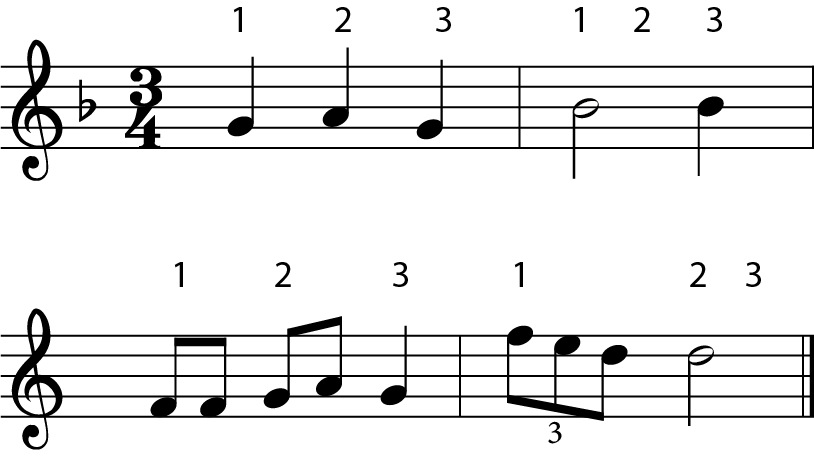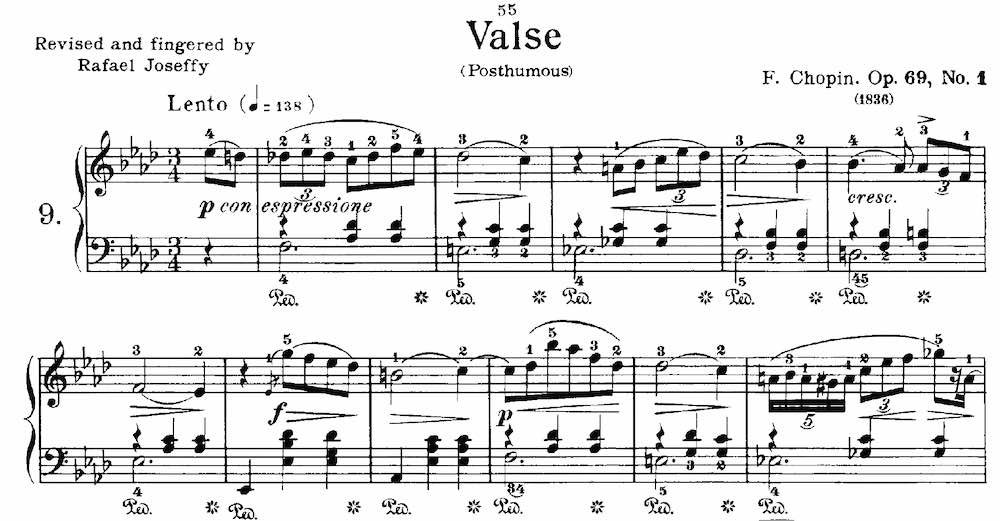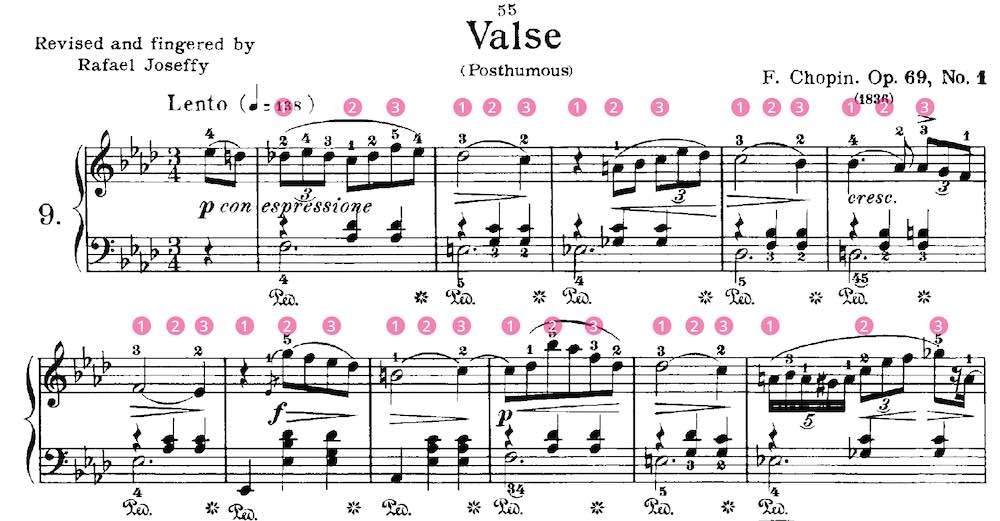Time Signature 3/4 is one of the most popular meters in western music. Each measure (or bar) has 3 quarter notes beats in it. The waltz is a classic piece of music in 3/4 and listening to it gives you the ‘swing’ feel of this meter.
We’re going to dive straight into 3/4 time, but you can find more info on what a time signature in our complete guide to meters.
What is time signature 3/4?
The time signature or meter 3/4 is show in the music as a 3 above a 4.

This comes before the music starts but after the clef and key signature. The ‘3’ stands for 3 beats per measure and the ‘4’ tells us that each beat is a quarter note. This means that the notes in each measure will add to three quarter notes.
See if you can spot the three quarter note beats in this line of music.

Now here it is with the beats labelled.

How to count in 3/4
3/4, like all meters, has a distinctive feel to it. We count 3/4 as 1..2…3….1…2….3 and you can see this on the music below.

These three quarter-note beats are counted regardless of how those beats are divided up.
Here is a piece by Chopin. It contains more complex rhythms with a variety of note lengths, however this piece would still counted with three quarter-note beat. Can you spot where each beat falls?

Now here it is with the beats added.

3/4 is a Simple, Triple Time Signature
There are three broad types of time signature: simple, compound and irregular. Simple time signatures have beats that divide into two. Compound time signatures have beats that divide into three and irregular time signatures have a mixture of beats.
In time signature 3/4 each beat is a quarter note and therefore can be divided into TWO eighth notes. This makes 3/4 a Simple Time Signature. It is a Triple time signature because there are THREE quarter-note beats in each measure. To learn more about the differences check out our ultimate guide to time signatures.
The notes below show how each quarter note beat in 3/4 time can be divided into two eight notes.

Songs with a 3/4 Time Signature
Elliot Smith – Waltz 2 (XO)
John Denver – Annie’s Song
The Beatles – Lucy in the Sky with Diamonds
Chopin – Waltz in A Minor
What’s the difference between 4/4 and 3/4?
4/4 time has four quarter-note beats per measure and is counted as 1..2..3..4..1..2…3…4. There is an emphasis on the first and third beats in each measure so we can call these strong beats.
Time signature 3/4 has quarter note beats, the same as 4/4, but it only has three of them per measure. There is an emphasis on the first beat in each bar and it is counted as 1..2..3..1..2..3. This gives 3/4 its distinctive ‘waltz’ feel.
What’s the difference between 3/4 and 6/8?
On the face of it 3/4 and 6/8 are quite different time signatures. 6/8 is has 6 eighth notes per measure and these are grouped into two groups of 3. This means that 6/8 has two strong beats per measures and each other these is divided into three eighth notes. (The image below shows this).

This means that 6/8 is counted as 1..and…a…2…and…a…1….and….a….2….and….a… For more on 6/8 see or dedicated post to this time signature.
3/4 and 6/8 can be confused because a slow song in 6/8 can often feel like it’s in 3/4. Equally a fast song in 3/4 can feel like it has been written in 6/8. Listen to John Mayer ‘Gravity’ which is actually written in 6/8. However because the tempo is slow,
The key to spotting the difference is the pendulum feel of 6/8, as this contrasts with the repeating 1..2..3 of 3/4. In The Animals ‘House of the Rising Sun’ you can hear the pendulum swing of the 6/8 time signature.
Now listen to ‘Waltz 2 (XO) by Elliot Smith’ for a straight 3/4 time signature.
What next…?
If you want to learn more about time signatures, check out our complete guide to meters.
What to learn more about music theory, take a look at our guide to the circle of fifths here.
